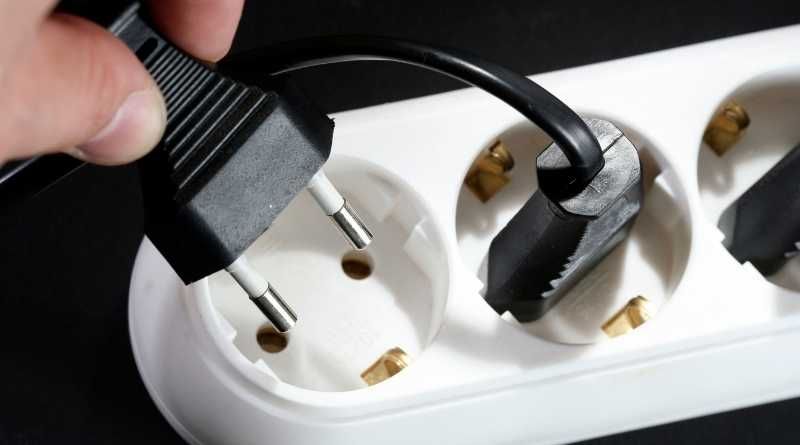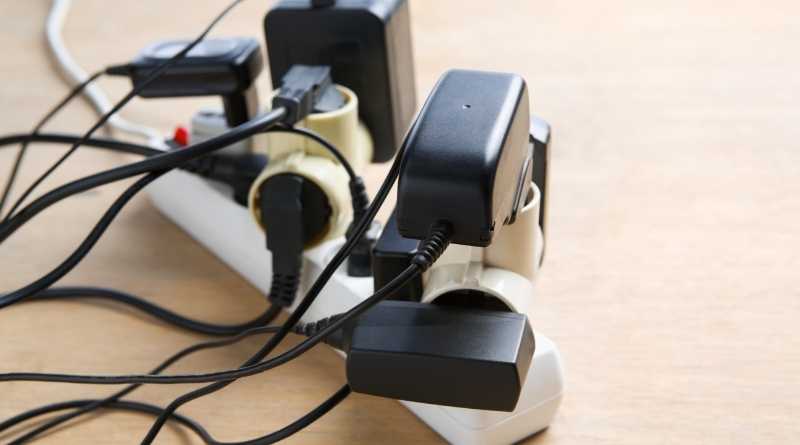Are you wondering if you can plug a surge protector into another surge protector? It’s a common question, especially if you have a lot of electronics and not enough outlets. While it may seem like a good idea to daisy chain surge protectors, there are some important do’s and don’ts to keep in mind.
First, it’s important to understand why surge protectors are necessary. They protect your electronics from power surges, which can occur when there is a sudden increase in electrical current. This can happen during a lightning storm or when large appliances turn on and off. Surge protectors help to regulate the amount of electricity that enters your devices, preventing damage and extending their lifespan.
But what about plugging one surge protector into another? Let’s explore the do’s and don’ts of this common practice.
Table of Contents
The Importance of Surge Protectors
If you don’t want to risk losing your electronics to power surges, you should always use surge protectors! A surge protector is a device that protects your electronics from voltage spikes or surges. These surges can be caused by lightning strikes, power outages, or even faulty electrical wiring.
Surge protectors work by diverting excess voltage away from your electronics and into the ground wire. Surge protectors are essential for protecting your valuable electronics from damage. Without a surge protector, a power surge could cause irreparable damage to your devices. This means that you would have to replace your electronics, which can be a costly expense.
By using a surge protector, you can protect your electronics and save yourself from the headache of having to replace them. It’s important to note that surge protectors should be used correctly to be effective. You should never plug a surge protector into another surge protector, as this can cause the surge protectors to overload and fail.
Additionally, surge protectors should be replaced periodically, as they can wear out over time. By following these simple rules, you can protect your electronics and ensure that they last for years to come.
Understanding Daisy Chaining
To properly understand daisy chaining, it’s important to consider the order in which surge protectors are connected.
Daisy chaining is when you connect one surge protector to another, creating a chain of power strips. While this may seem like a convenient solution to a lack of outlets, it’s not recommended.
The reason for this is that daisy chaining surge protectors can increase the risk of a power surge. Each surge protector has a limit to the amount of voltage it can handle.
When you connect multiple surge protectors together, you’re essentially increasing the amount of voltage each one has to handle. This can cause them to fail and leave your devices unprotected.
So, what can you do if you need to plug in multiple devices? The best solution is to use a single surge protector with multiple outlets. These power strips are designed to handle multiple devices and will provide adequate protection.
If you absolutely must use more than one surge protector, make sure you’re plugging them directly into an outlet, not into each other.
Manufacturer Guidelines
Following the manufacturer guidelines for surge protectors is crucial for ensuring the safety and protection of your electronic devices. Most manufacturers do not recommend daisy chaining surge protectors, as it can increase the risk of overloading and overheating. Similarly, plugging one surge protector into another surge protector is not recommended by most manufacturers.
Here is an example of manufacturer guidelines for some popular surge protector brands:
| Brand | Maximum Surge Protection | Maximum Joules | Maximum Amps | Maximum Voltage |
|---|---|---|---|---|
| Belkin | 6000 | 2160 | 15 | 125 |
| APC | 3020 | 2160 | 15 | 120 |
| Tripp Lite | 1440 | 1080 | 12 | 120 |
As you can see, each brand has its own maximum surge protection, maximum joules, maximum amps, and maximum voltage. It is important to read and follow the manufacturer guidelines to ensure that your surge protector is being used correctly and effectively.
Overall, it is important to remember that plugging one surge protector into another surge protector is not recommended by most manufacturers. Following the manufacturer guidelines for surge protectors can help prevent damage to your electronic devices and keep them safe from power surges.
Alternatives to Daisy Chaining
If you’re looking for alternatives to daisy chaining surge protectors, there are a couple of options to consider. One is to use power strips instead of surge protectors. While power strips don’t offer the same level of protection as surge protectors, they can still provide multiple outlets for your devices.
Another option is to use extension cords, but be sure to choose a cord that’s rated for the power load you’ll be using.
Using Power Strips Instead of Surge Protectors
You shouldn’t rely on power strips as a substitute for surge protectors, as doing so puts your electronics at risk of being damaged during a power surge.
While power strips do provide multiple outlets, they do not offer any protection against power surges. Surge protectors, on the other hand, are specifically designed to protect your electronics from power spikes and surges.
Power strips are simply a way to expand the number of outlets available to you, but they do not have the necessary components to regulate the flow of electricity. This means that if a power surge were to occur, your devices would be left vulnerable to damage.
So, while power strips may be convenient, it’s important to use surge protectors to ensure the safety of your electronics.
Using Extension Cords
Now that you know that power strips are not the same as surge protectors, it’s important to discuss the proper use of extension cords.
Extension cords are a great way to extend the reach of your electrical outlets, but they should never be used as a permanent solution. In fact, it’s recommended that you only use extension cords for temporary purposes such as powering a lamp or charging a phone.
When using extension cords, there are a few things to keep in mind. First, make sure that the cord is rated for the specific job you need it for. For example, if you’re using it to power an appliance, make sure the cord is rated for the wattage of that appliance.
Secondly, never plug one extension cord into another or into a power strip. This can overload the circuit and cause a fire. Instead, use a single extension cord that is long enough to reach your desired location.
By following these guidelines, you can safely use extension cords without putting yourself or your home at risk.
Tips for Safe Surge Protector Use
To use your surge protector safely, always make sure it is plugged directly into a wall outlet and not daisy-chained into another power strip or extension cord. This is because surge protectors are designed to absorb excess voltage and protect your devices from power surges. However, plugging one surge protector into another can cause voltage fluctuations and reduce the effectiveness of the surge protection.
In addition to avoiding daisy-chaining surge protectors, it’s important to use the right type of surge protector for your needs. Different surge protectors have different levels of protection, measured in joules. Look for a surge protector with at least 1000 joules of protection for basic home electronics, and higher levels for more sensitive equipment like computers or home entertainment systems.
Remember that surge protectors do not last forever. Over time, the components that absorb excess voltage can wear out and become less effective. To ensure that your surge protector is still providing adequate protection, replace it every few years or after a major power surge. And always be sure to read and follow the manufacturer’s instructions for your specific surge protector model.
| Do’s | Don’ts |
|---|---|
| Plug directly into a wall outlet | Daisy-chain into another power strip or extension cord |
| Use a surge protector with at least 1000 joules of protection | Use an old or worn out surge protector |
| Replace surge protector every few years or after a major power surge | Overload the surge protector with too many devices |
| Follow manufacturer’s instructions | Use surge protector with damaged cords or components |
By following these tips, you can ensure that your surge protector is providing the best possible protection for your devices. Remember to avoid daisy-chaining, choose the right level of protection, and replace your surge protector regularly. And don’t forget to follow the manufacturer’s instructions to get the most out of your surge protector.
When to Replace Surge Protectors
It’s important to keep an eye on your surge protectors to ensure they’re still functioning properly. Signs of wear and tear, such as frayed cords or melted plastic, can be indicators that it’s time to replace your surge protector.
It’s recommended to replace your surge protector every 2-3 years to ensure maximum protection for your electronics.
Signs of Wear and Tear on Surge Protectors
As surge protectors age, their effectiveness may decrease due to wear and tear. This can be indicated by frayed cords, loose outlets, or a lack of response to power surges. It’s important to recognize these signs and replace your surge protector before it fails to protect your devices.
Here are some common signs of wear and tear on surge protectors:
-
Frayed cords: Over time, the cord of a surge protector can become bent or twisted, leading to frayed wires. This can be dangerous as it can expose the wires and potentially cause a fire.
-
Loose outlets: If the outlets on your surge protector are loose, it can lead to poor connections and power interruptions. This can cause your devices to turn off unexpectedly or fail to charge properly.
-
Lack of response to power surges: If your surge protector stops responding to power surges, it may have reached the end of its lifespan. This means it may no longer be able to protect your devices from electrical spikes and surges.
By keeping an eye out for these signs, you can ensure that your surge protector is always working as intended. If you notice any of these signs, it’s time to replace your surge protector to ensure your devices stay safe and protected.
Recommended Replacement Schedule
Make sure you don’t wait too long before replacing your surge protector, or you could be putting your beloved devices at risk! The recommended replacement schedule for surge protectors is every 2-3 years, depending on usage and environmental factors.
This means that even if your surge protector appears to be in good condition, it’s important to replace it regularly to ensure it’s still providing optimal protection. Factors such as power surges, lightning strikes, and even normal wear and tear can all impact the effectiveness of your surge protector over time.
By replacing it every few years, you can rest assured that your electronics are still receiving the necessary protection from power fluctuations. Don’t wait until it’s too late – make sure to keep up with the recommended replacement schedule for your surge protector to keep your devices safe and secure.
Conclusion
So, can you plug a surge protector into another surge protector? While it may seem like a convenient solution for managing multiple electronics, it’s not recommended by manufacturers or safety experts.
Daisy chaining surge protectors can increase the risk of electrical fires and damage to your devices. It’s important to follow manufacturer guidelines and use alternatives such as power strips with built-in surge protection or a single high-quality surge protector with sufficient outlets.
Remember to also regularly inspect and replace surge protectors to ensure continued protection for your valuable electronics. By taking these precautions, you can enjoy the convenience of multiple electronics without compromising safety.



